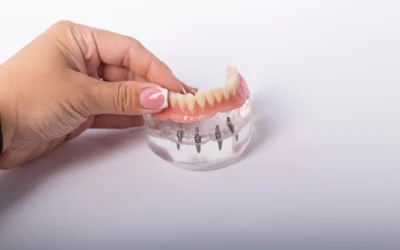So, you’re getting your wisdom teeth pulled. Wisdom tooth extraction can make a huge difference. Most people don’t have enough room in their mouth for the third set of molars, and the extra teeth can cause no end of trouble if they grow in while misaligned. Complications include:
- Crooked teeth
- Broken teeth
- Cysts
- Weakened jaw
- Infection
- Tooth loss
Wisdom tooth extractions are common, and not a cause for alarm. But a better understanding of what happens during the procedure might alleviate any lingering worries.
Will I Be Awake?
Four levels of anesthesia may be used depending on how complicated your procedure will be.
- Local Only: The dentist will apply a topical solution to help numb the gums around the tooth before injecting anesthesia to make the nerves around the tooth sleep. If you’ve ever had a filling, you’ve had this type of anesthesia. You’ll be awake for the procedure but you won’t feel pain around the tooth.
- Laughing Gas: If you need more relaxation during the procedure, your dentist might use nitrous oxide, or laughing gas, to take the edge off. You’re conscious but shouldn’t feel anxiety.
- Conscious Sedation: The next step up is an IV-administered conscious sedation, meaning you’re awake but won’t remember anything that happens, including pain. If your dentist plans to use IV sedation, you will need someone to drive you home, as the drugs can make you too sleepy to drive for several hours after the procedure is over.
- General Anesthesia: If the tooth is in an awkward position, your dentist may recommend general anesthesia, as you would have if going for any other surgery. You go to sleep and wake up after it’s all over. You’ll have to wait around in recovery for a while and need a driver to go home, but you won’t feel a thing.
In all cases, the dentist administers numbing medicine in the nerves around the tooth to minimize post-procedural pain.
How Do They Remove the Teeth?
The dentist will make a small incision in the gums if the tooth hasn’t broken through to access the tooth. They use a tool to cut the tooth into smaller pieces so it’s easier to remove, pulling out tiny chunks with tweezers. Once they’ve liberated the tooth from the gums and jaw, the dentist may use a filler to prevent dry sockets or sew the skin together. A blood clot will form at the site and will protect the tissue and nerves as you heal from surgery. The stitches must come out in a week to encourage proper healing.
What is Proper After-Care?
- Wound Site Care: It’s important to be gentle around the surgical site to avoid dislodging blood clots. The clot will prevent a painful condition called dry socket, where the tooth nerve is exposed to the air. Avoid sucking on anything to avoid pulling the clot away. Use the needleless syringe with warm salt water to gently flush food particles away from the surgical sight.
- Oral Hygiene: Continue to practice good oral hygiene on the remaining teeth for optimal healing conditions. Be sure to floss, brush, and use mouthwash like normal. You may want to stick to warm saltwater for a couple of days instead of an alcohol-based mouthwash. It encourages healing and helps with discomfort. Be gentle when swishing the salt water to prevent dislodging the blood clot.
- Pain Relief: Your dentists will instruct you on the proper type and dosage of medication for your age and size. Take all medications as prescribed. It is easier to stay on top of the pain than it is to play catch up if you miss a dose and wait for the pain to reach full intensity before taking the next dose.
If you have pain and swelling, gently swish warm salt water to ease surface pain and use an ice pack on the cheek to reduce swelling. Be careful not to get ice burns, especially on that first day when your cheeks may be numb. Wrap the ice pack in a thin cloth and ice the area for no longer than 20 minutes to prevent skin damage. - Rest: Pain will slow the healing process and tax the body, so take it easy. Let yourself take naps in the first few days and get adequate sleep. Sleep allows your body to relax and redirect energy reserves and resources to healing and recovery.
Is it Ever an Emergency?
If you are experiencing symptoms of infection, it can be. Search for an “emergency dentist near me.” If you’re worried about not having dental coverage, search “emergency dentist no insurance near me” to find offices with payment plans and other options.
Prevention is Key
Prevention is always better than trying to fix it after it goes wrong. See your dentists regularly and get x-rays once a year. Your dentist can tell you in advance if your wisdom teeth are likely to cause you problems. You can take care of it before they damage other teeth or cause an infection.



